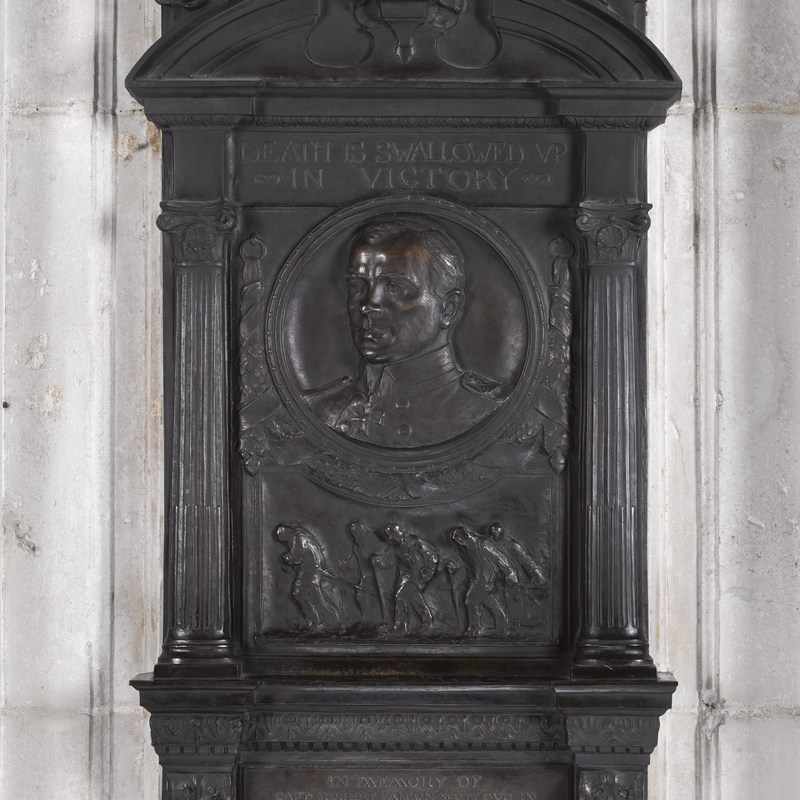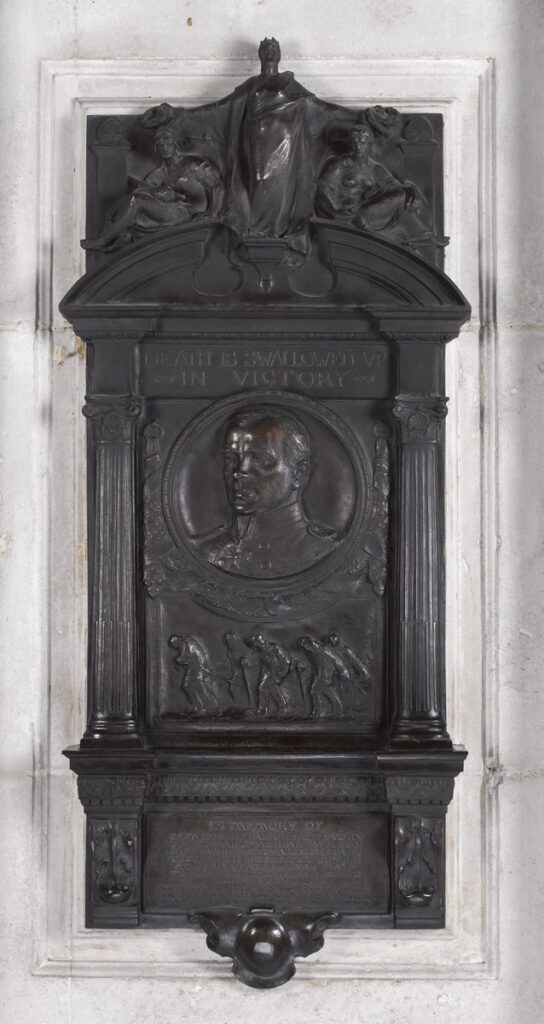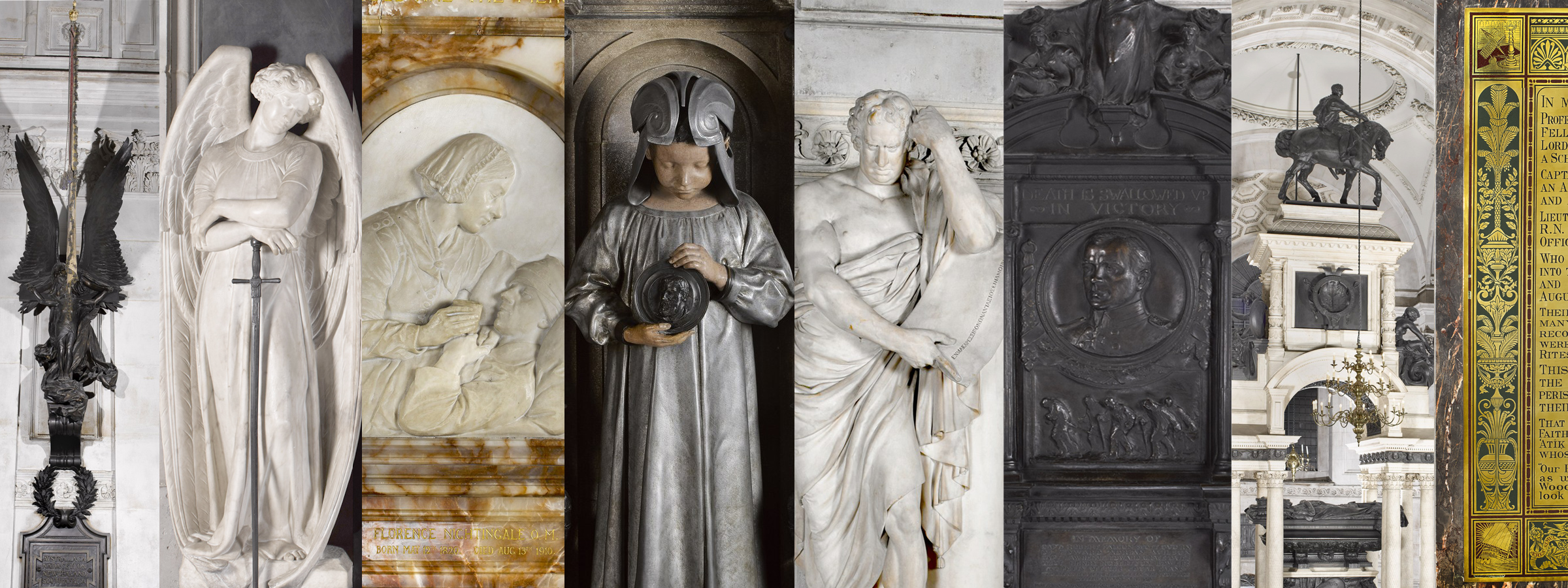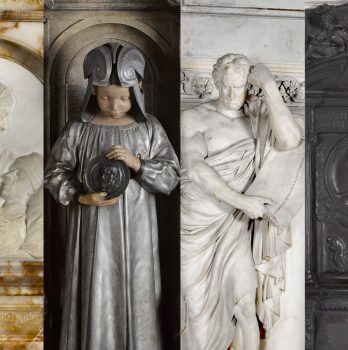‘The South Pole’ – Polar Explorer Geoff Somers’ Response to the the Monument to the Antarctic Exploration Party under Captain Robert Falcon Scott, by S. Nicholson Babb, 1915


Transcript: ‘The South Pole’
by Geoff Somers
Until 1912, no person had stood at the South geographic pole, located near the centre of Antarctica. To reach this point, it was necessary to sail to the Antarctica continent by specially toughened ships. Once there, the men had to set up sturdy cabins that would be their home for a year or more. Through the months, they would prepare equipment and distribute food provisions along the proposed route, to support a team of men on a return journey to the South Geographical Pole.
In 1910, a British team set out from England both to take on this challenge and to carry out extensive scientific exploration.
The return polar journey of 800 miles each way to the Pole would be a mammoth undertaking, with months of tortuous physical effort, the men hauling their own sledges in extreme cold and deprivation. At the end of their first winter, with little or no chance of any rescue, or even communication with the outside world, these five men, Robert Falcon Scott (the leader), Edward Wilson, ‘Birdie’ Bowers, ‘Titus’ Oates and Edgar Evans, with initial support by other expedition members, commenced towards the South Pole, still hundreds of miles away.
Reaching the Pole, they found evidence that a Norwegian, Roald Amundsen and his team, having set out from a base further around the continent, had forestalled them, leaving his country’s flag, a tent and, a note to Scott.
Bitterly disappointed, the five exhausted men, battling against the approaching winter, had the daunting task to reach their depots and the safety of their coastal base.
Weeks later, worn out, emaciated, having run out of food and with no fuel for their stoves, they died of starvation and the extreme cold.
At that time in 1912, there were no radios, no satellite navigation, no maps, no lightweight or high-tech equipment, no aeroplanes, and absolutely no chance of rescue should it be needed. In today’s feats of endurance, even in the most inaccessible parts of the world, there is a good chance of summoning help.
This tragic demise of Scott’s team stirred the British nation. Their determination against impossible odds, was taken as an example of the British stoicism, of camaraderie and dedication.
I have travelled around 14,000 miles in the Polar Regions, several times to both North and South Poles, using husky dogs to pull the sleds, other times using kites to pull me, or pulling my own supplies. As with most modern expeditions, many a time I have been in danger of mishap but have always known that I could get help from the outside world, be it to bring supplies or equipment.
No one has yet been able to replicate Scott’s journey. He had no chance of rescue. He must succeed or die! He left a legacy of determination, resilience and leadership.
Before commencement of his trek, the team member Edward Wilson, wrote a short poem that here is recited by his great-nephew, David Wilson.
The Barrier Silence (1911)
By Edward Wilson
(recited on the video by Wilson’s great-nephew David Wilson)
The silence was deep with a breath like sleep
As our sledge runners slid on the snow,
And the fateful fall of our fur-clad feet
Struck mute like a silent blow
On a questioning, ‘hush’, as the settling crust
Shrank shivering over the floe;
And the sledge in its track sent a whisper back,
Which was lost in a white fog-bow.
And this was the thought that the silence wrought
As it scorched and froze us through:
Though secrets hidden are all forbidden
Till God means man to know,
We might be the men God meant to know
The heart of the barrier snow,
In the heat of the sun, and the glow
And the glare from the glistening floe,
As it scorched and froze us through and through
With the bite of the drifting snow.

About Geoff Somers
Geoff Somers MBE has been on many expeditions to both the North and South Poles and holds several records for his achievements. He was the first Briton to cross Antarctica on foot, as a member of the 1989–90 International Trans-Antarctica Expedition, and he has recently written a book about his experience, Antarctica: The Impossible Crossing? (2018).
In 2005–06, Geoff was the guide for an expedition following in the footsteps of Scott and his companions, right down to the clothing and equipment. As well as polar journeys, he has taken part in challenging expeditions to both jungles and deserts.
Geoff was awarded an MBE for services to Education and Antarctic exploration, in 1994, and, in 1996, the Polar Medal. The Antarctic peak Somers Nunatak, is named in his honour.
Find Geoff on Twitter.
About the Monument
It took nearly a year for the news to reach England of the deaths of Scott and his men. It came via a telegram from New Zealand on 11th February1913. By then, people were expectant of good news, which heightened the shock. Scott’s wife Kathleen was actually on a ship heading to New Zealand to meet her husband and so was unreachable. Meanwhile, in London, a state memorial service was organised and held at St Paul’s Cathedral within three day of the news breaking. Despite the failure of the expedition, the explorers’ hero status was confirmed.
A public subscription was set up to pay for two national memorials, one outdoors and one in St Paul’s Cathedral. Sculptor Stanley Nicholson Babb (1874–1957) was awarded the St Paul’s commission, with his design incorporating a relief panel representing the men pulling their sledge, and a medallion portrait of Scott above. It was completed in 1915.
Image/Sound Credits
The video contains photographs taken during the Terra Nova Expedition from the following sources:
Alexander Turnbull Library, Wellington, New Zealand
(Kinsey, Joseph James (Sir), 1852-1936: Photographs relating to Antarctica and mountaineering):
- Captain Scott standing by a sled, during the British Antarctic Expedition of 1911-1913. Ref: PA1-f-067-032-3. /records/22531857
- Lieutenant Henry R Bowers and pony Victor, Antarctica. Ref: PA1-f-067-051-3. /records/23077515
- Captain Lawrence Edward Grace Oates and ponies, Antarctica. Ref: PA1-f-067-007-2. /records/23188931
- Edward Evans with a sledging theodolite, Antarctica. Ref: PA1-f-067-052-3. /records/22767025
- Members of the British Antarctic Expedition of 1910-1913 at the South Pole – Photograph taken by Henry Robertson Bowers. Ref: PA1-f-066-12-1. /records/22724814
- Members of the British Antarctic Expedition of 1910-1913 leaving the 3 degree depot – Photograph taken by Henry Robertson Bowers. Ref: PA1-f-066-11-6. /records/22297843
- Cairn marking the site of Robert Falcon Scott’s tent. Ref: PA1-f-066-86-3. /records/23248089
National Portrait Gallery, London
Edward Adrian Wilson, by Herbert George Ponting, carbon print, 1911, NPG P881,
https://www.npg.org.uk/collections/search/portrait/mw57481/ (CC BY-NC-ND 3.0)
State Library of New South Wales, Australia
Photograph album of the Scott expedition to Antarctica, 1910-1913 / annotated by T. Griffith Taylor.
https://collection.sl.nsw.gov.au/record/9AL4rOQY/
The video contains the following sound :
Soundscape (poem): ‘Southern oceans soundscape » Whistling Antarctic blizzard’ by stormpetrel (recording of Katabatic wind blowing in Terre Adélie, Antarctica) (edited); CC-BY-NC 3.0, https://freesound.org/people/stormpetrel/sounds/173096/)


